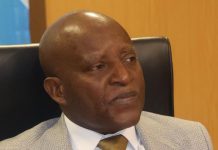Africa-Press – Namibia. This week, The Bank of Namibia unveiled newly upgraded coins – the country’s first major redesign since independence – and introduced next-generation polymer banknotes.
Branded under the theme ‘Our Currency, Our Heritage, Our Pride’, the new money represents progress: improved durability, enhanced security and a celebration of national identity.
But beneath this symbolic leap forward lies a fundamental contradiction: Namibia’s currency is still economically tethered to the South African rand (ZAR).
The Namibia dollar remains pegged one-to-one to the ZAR, and worse, the rand is still accepted as legal tender throughout Namibia while the Namibia dollar is rejected across the border. That is not monetary equality. It is monetary colonialism.
If Namibia is serious about pride and sovereignty, this contradiction must be confronted. Why is Namibia, 34 years after independence, still allowing a foreign currency – issued by a former coloniser – to dictate the value of the nation’s own?
Still in South Africa’s Shadow Namibia joined the Common Monetary Area after independence, alongside South Africa, Lesotho and Eswatini. At the time, pegging the Namibia dollar to the ZAR brought much-needed exchange rate stability and facilitated trade with the country’s largest partner.
But the world has changed. Namibia now has a functioning central bank, its own stock exchange, and maturing financial institutions. Yet, inflation, interest rates and the exchange rate remain largely influenced by South Africa’s economic and political decisions, not Namibia’s own realities.
Put plainly: the Namibian currency moves not because of decisions in Windhoek, but because of decisions in Pretoria. An Unequal Arrangement What makes this situation more disturbing is the fact that the South African rand is freely accepted across Namibia, but the Namibia dollar has no legal standing in South Africa.
This one-way monetary relationship reinforces a dangerous narrative: that Namibia’s currency – and by extension, the Namibian economy – is secondary. It places the national financial system in a subordinate position and strips the country of the dignity of true monetary independence.
Imagine if Kenya still allowed the British pound to circulate in Nairobi, or if Botswana accepted the rand while the Pula was ignored in South Africa. It’s unthinkable.
That’s why Botswana abandoned the rand peg in 1976 and built one of Africa’s most respected and stable currencies. Namibia should take notes. The JSE Determines Namibia’s Value Right now, the Namibia dollar’s value is effectively decided by forces far removed from Namibia.
Currency speculators on the Johannesburg Stock Exchange, credit rating agencies reacting to South African politics, or even a mining strike in Limpopo can instantly impact the buying power of every Namibian citizen. This is not sovereignty. It is outsourced economic control.
Namibia has a solid macroeconomic track record and the institutional capacity to manage its own currency. Yet the peg locks the country into South Africa’s volatility, limiting the ability to tailor monetary policy to domestic needs and realities.
A Roadmap to Monetary Freedom Unpegging from the rand does not mean cutting ties with South Africa. It means upgrading the Namibian economy to full independence.
One option is a managed float of the Namibia dollar based on national economic fundamentals, rather than South Africa’s. Another is exploring a currency basket linked to Namibia’s major trading partners, including China, the European Union and fellow African economies.
The country could also phase out the rand’s legal tender status within its borders, while gradually building trust and liquidity in the Namibia dollar.
This would require a comprehensive campaign to restore public confidence in the national currency, reinforced by credible, independent fiscal and monetary policy.
Botswana did it. Rwanda did it. Namibia can too. Pride Requires Power The Bank of Namibia’s new notes and coins are a welcome visual step forward. But design isn’t destiny.
A truly sovereign currency is not defined by how it looks but by who controls its value and where it circulates. This week’s announcement should spark not just celebration, but deep reflection.
If Namibia is truly committed to ‘Our Currency, Our Heritage, Our Pride’, then those words must be backed by action. It is time to break free from the monetary shadow of South Africa and let the Namibia dollar stand – and trade – on its own.
It’s time to finish the work of independence. It’s time to decolonise the currency. Elvis Mboya is the president of the Namibia-Kenya Chamber of Commerce and a former journalist in Namibia and Kenya.
For More News And Analysis About Namibia Follow Africa-Press






